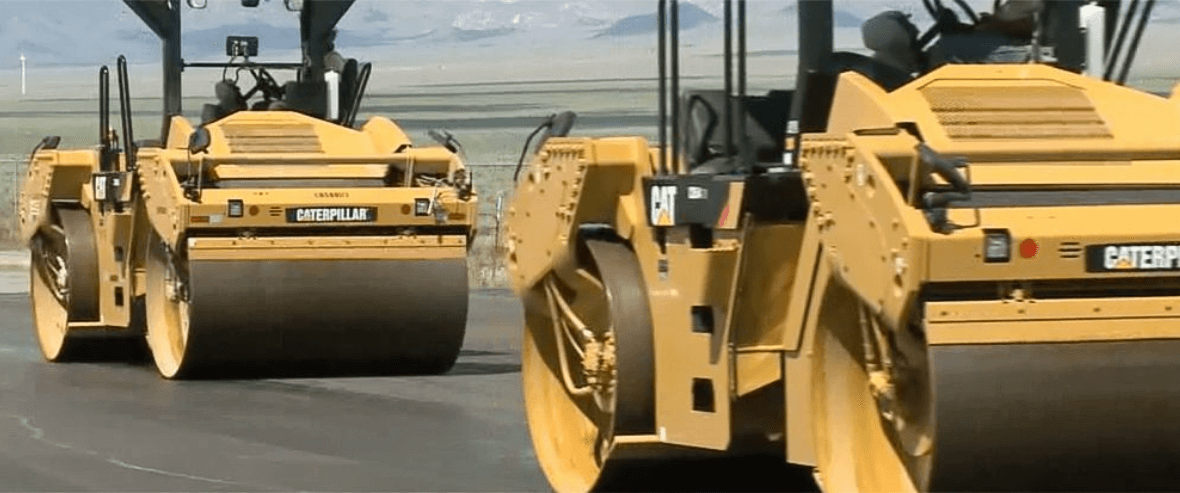
Commonly Used Types of Rollers for Construction Projects
Soil compaction is critical for building strong, stable foundations and roads. Achieving the right density requires the right tool and rollers are built specifically for this task. Each type of roller applies pressure differently, so choosing the right equipment is essential. Here’s a guide to the main types of rollers, when to use walk-behind rollers versus ride-on roller rentals and what to consider when renting.
What Are the Different Types of Rollers?
Rollers come in multiple designs, each with unique applications:
- Cylindrical: Lightweight and walk-behind, these are pushed by hand and are often used for small projects like residential driveways, paths, or small patches of asphalt.
- Pneumatic: Ride-on with air-filled tires, these offer wide coverage and smoother operation on uneven surfaces. They are common for compacting loose soil, sand and polishing road bases.
- Grid: Equipped with heavy steel bars, these rollers excel in coarse soils and sub-base road construction. They are cost-effective for low-traffic roads.
- Vibratory: Available in single and double drum models, they vibrate to compact granular bases, crushed stone, or asphalt layers. Smaller walk-behind versions are used in tight areas.
- Smooth-wheeled: These static rollers have one or two drums. Single-drum versions fit tight areas; tandem models work best on highways, sidewalks, or large paved surfaces.
- Sheepsfoot: With protruding feet on the drum, these rollers tamp silty clay or cohesive soils. They can be weighted for greater pressure and uniform compaction.
By understanding these options, contractors can match roller type to soil condition and project scope, reducing the risk of weak foundations or early pavement failure.
When Should You Use Walk-Behind Rollers?
Walk-behind rollers are compact and highly maneuverable. Operators walk behind or control them remotely. Their portability makes them easy to transport and ideal for small or narrow projects.
- Roadway shoulders and trench compaction
- Residential driveways, sidewalks and bike paths
- Foundation work and landscaping tasks
- Repair jobs or patching asphalt in confined spaces
With smooth vibratory drums, walk-behind rollers handle granular soils like sand and gravel effectively. Sheepsfoot drum versions are suited for clays and silts, squeezing out moisture for a dense, durable finish. Their design also provides high curb and side clearance, enabling work right up to edges without damaging surfaces.
When Should You Use Ride-On Rollers?
For large, demanding sites, ride-on roller rentals are more efficient. Operators sit on the machine, reducing fatigue and increasing productivity.
- Highway paving and major roadway projects
- Large commercial or industrial site prep
- Landfill, airport runway and dam construction
Ride-on rollers are heavier and cover more area per pass, producing uniform compaction quickly. They’re available in single drum, tandem, vibratory and combination units, offering flexibility depending on soil type. For expansive projects, ride-on rollers are essential for meeting deadlines and ensuring structural integrity.
How Do Rollers Handle Different Soil Types?
Soil falls into two main categories, and rollers must be matched accordingly:
- Granular soils: Coarse materials like gravel, sand, and asphalt crumble when dry and mold when wet. Smooth vibratory rollers are best for these, applying vibration to lock particles together.
- Cohesive soils: Finer materials like silts and clays hold water and can form cracks if compacted wet. Sheepsfoot rollers are ideal here, applying tamping force to squeeze out water and create stable layers.
Using the wrong roller type for the soil can lead to uneven compaction, erosion or failure over time. Choosing correctly improves long-term durability of roads and structures.
What to Consider When Renting a Roller
Renting offers a cost-effective way to access the right roller without long-term investment. To select the right equipment, consider soil type, application and site size.
- For tight or residential spaces, walk-behind rollers provide precise control.
- For wide, open projects, ride-on rollers deliver the speed and efficiency needed.
- Consider whether vibration is required. Vibratory rollers improve compaction on granular soils, while static models may suffice for lighter tasks.
Project needs vary — paving a parking lot differs from compacting landfill waste or prepping building foundations. Cat dealers can guide you toward the right machine for your scope and budget.
Rent Rollers at The Cat® Rental Store
The Cat® Rental Store offers a wide selection of rollers and other compaction equipment for compaction and paving. Our dealer network provides expert support, flexible terms and reliable machines maintained for peak performance. Find the Cat Rental Store near you to connect with your local dealer today.
